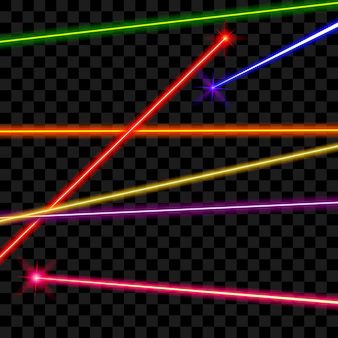The advancement of laser hair removal technology has revolutionized the way people approach hair removal. Laser hair removal has become one of the most popular cosmetic treatments for those looking for an efficient and long-lasting solution for unwanted hair. This blog post will explore how laser hair removal technology has evolved over the years, from its early beginnings to the modern-day treatments available today. We will discuss the different types of lasers used, as well as the safety and effectiveness of the treatments. Finally, we'll look at the future of laser hair removal technology, and what the next generation of treatments might bring.

The History of Laser Hair Removal
The origins of laser hair removal can be traced back to the late 1960s when it was first proposed as a method for removing unwanted body hair. In the decades that followed, different types of lasers were developed for use in laser hair removal treatments, including intense pulsed light, diode lasers, and alexandrite lasers. Early laser hair removal treatments were often painful and not very effective; however, advances in technology have made modern laser hair removal treatments much more comfortable and effective.
In the 1990s, many new technologies were developed for use in laser hair removal treatments. These included diode lasers, alexandrite lasers, and intense pulsed light (IPL) technology. Diode lasers used short pulses of energy to penetrate deep into the skin and target the hair follicles directly, while IPL technology used broad spectrum light to target large areas of the skin at once. Both technologies allowed for more effective and precise treatments than earlier laser technologies.
In the 2000s, laser technology continued to evolve, with newer technologies such as erbium-doped yttrium aluminum garnet (Er:YAG) lasers and neodymium-doped yttrium aluminum garnet (Nd:YAG) lasers being developed for use in laser hair removal treatments. These new laser technologies offered more powerful and precise treatments with less discomfort for patients.
Today, laser hair removal treatments are safer and more effective than ever before thanks to technological advancements. Different types of lasers are used depending on the area being treated and the patient's skin type, allowing for customized treatments that offer maximum results with minimal side effects.
How Lasers Work
Laser hair removal is a popular procedure that utilizes laser light to target and remove unwanted hair. The laser emits an intense beam of light that is attracted to the pigment in the hair follicle, causing it to heat up and eventually become damaged. This damage causes the hair follicle to stop producing new hairs.
The laser works by emitting a single wavelength of light that is attracted to dark pigment like the color of hair. When this light hits the pigment in the hair follicle, it creates a thermal reaction that damages the follicle, preventing it from producing new hairs. The laser can also be used on lighter-colored hairs, however, this requires a longer wavelength of light and more energy to achieve results.
Different Types of Lasers

There are a variety of laser technologies used in the field of laser hair removal. Each type of laser has its own unique characteristics and is used for different purposes. Some of the most common types of lasers used in laser hair removal are:
• Diode Laser: This is the most popular type of laser for hair removal treatments. It works by emitting an intense beam of light that is absorbed by the melanin in the hair follicles, causing them to heat up and break down.
• Alexandrite Laser: The Alexandrite laser has a longer wavelength than the diode laser, allowing it to penetrate deeper into the skin. This makes it effective at treating larger areas, such as the legs, back, and chest.
• YAG Laser: The YAG laser has a shorter wavelength than the diode and Alexandrite lasers, making it ideal for use on darker skin tones.
• Nd: YAG Laser: This type of laser is very similar to the YAG laser, but it has a longer wavelength which makes it better for treating areas with lighter skin tones.
• Intense Pulsed Light (IPL): IPL uses a broad spectrum of light to target both the hair follicle and the surrounding tissue. It is less effective than other types of laser hair removal but can be used to treat a larger area in one session.
Each type of laser offers different benefits and results, so it is important to discuss with your doctor which type of laser is best suited for you. With the right technology and treatment plan, you can achieve lasting results with laser hair removal.
The Future of Laser Hair Removal
The advancement of laser hair removal technology over the last few decades has revolutionized the way people remove unwanted hair. With more sophisticated laser systems, laser hair removal is becoming even more effective, efficient, and safe for people of all skin types.
The latest advances in the field of laser hair removal are making the procedure even faster, with shorter treatment times and fewer sessions needed to achieve permanent results. High-powered lasers are also being developed that offer more precise targeting and a wider range of wavelengths, allowing for better coverage and a more targeted treatment.
The most exciting new developments in laser hair removal technology involve personalized treatments. By using artificial intelligence and deep learning algorithms, it’s possible to create a tailor-made treatment plan for each patient based on their unique skin type, hair color, and other characteristics. This allows for customized treatments that are tailored to individual needs and preferences, which can make the process even more effective.
In case you have found a mistake in the text, please send a message to the author by selecting the mistake and pressing Ctrl-Enter.




No comments yet